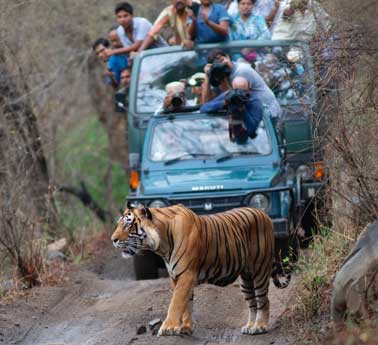Wildlife Distribution In India
Wildlife distribution in India is incredibly diverse, owing to the country's varied topography, climate, and ecosystems. From the Himalayan peaks in the north to the coastal regions in the south, India boasts a rich array of flora and fauna. Here's an overview of the wildlife distribution across different regions of India:
Himalayan Region
The Himalayan region in northern India is known for its alpine forests, meadows, and high-altitude ecosystems. It is home to iconic species such as the snow leopard, Himalayan musk deer, Himalayan tahr, and the elusive red panda. These rugged mountains also support a variety of bird species, including pheasants, monals, and various birds of prey.


Terai and Bhabar Region
The Terai and Bhabar regions, located at the foothills of the Himalayas, are characterized by dense forests, grasslands, and riverine habitats. These areas are prime habitats for Bengal tigers, Indian elephants, one-horned rhinoceroses, and swamp deer. The region is also known for its rich birdlife, with species like the great hornbill, pied hornbill, and Bengal florican.
Western Ghats
The Western Ghats, a UNESCO World Heritage Site, is a biodiversity hotspot renowned for its lush rainforests, endemic species, and high levels of species diversity. This region is home to iconic wildlife such as the Bengal tiger, Indian elephant, lion-tailed macaque, and Nilgiri tahr. The Western Ghats also harbor a multitude of amphibians, reptiles, and butterflies found nowhere else on Earth.
Eastern Ghats
While less famous than their western counterpart, the Eastern Ghats are nonetheless important for biodiversity conservation in India. These hills support diverse ecosystems, including dry deciduous forests, scrublands, and grasslands. Wildlife found here includes the Indian leopard, Indian elephant, sloth bear, and various species of deer and antelope.
Central Indian Highlands
The central Indian highlands comprise a mix of forests, plateaus, and grasslands, providing habitat for a wide range of wildlife species. This region is known for its tiger reserves, including Ranthambore, Bandhavgarh, and Pench, which are vital for the conservation of Bengal tigers. Other notable species in the area include leopards, Indian bison (gaur), and Indian wild dogs (dholes).
Thar Desert
Despite its arid conditions, the Thar Desert supports a surprising diversity of wildlife adapted to desert life. Species such as the Indian fox, desert cat, Indian gazelle (chinkara), and desert monitor lizard are found here. The Desert National Park in Rajasthan is a designated protected area that conserves the unique flora and fauna of this ecosystem.
Coastal Regions
India's extensive coastline is home to a variety of marine and estuarine ecosystems, supporting diverse marine life. Along the coast, mangrove forests provide habitat for species like the Bengal tiger, saltwater crocodile, and various bird species. The Sundarbans, the largest mangrove forest in the world, is famous for its population of Bengal tigers adapted to a semi-aquatic lifestyle.
Islands
India's island territories, such as the Andaman and Nicobar Islands and the Lakshadweep Islands, harbor unique ecosystems with endemic flora and fauna. These islands are home to species like the Andaman wild pig, Nicobar megapode, Nicobar tree shrew, and various species of birds, reptiles, and marine life.
In conclusion, India's wildlife distribution is incredibly diverse, spanning a wide range of habitats and ecosystems across the country. From the snow-capped peaks of the Himalayas to the sun-drenched beaches of the Andaman Islands, India's wildlife reflects the country's rich natural heritage and ecological significance. Conservation efforts are crucial to safeguarding these diverse ecosystems and ensuring the survival of India's unique flora and fauna for future generations.

